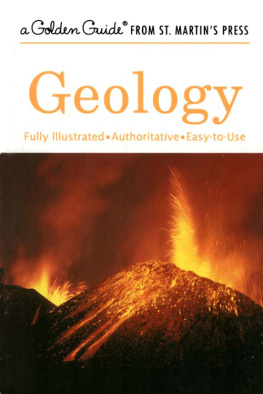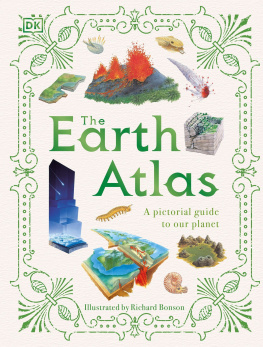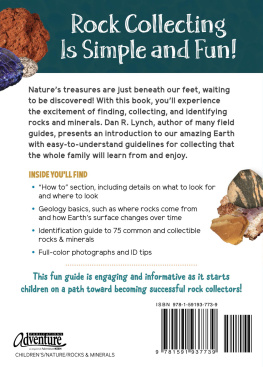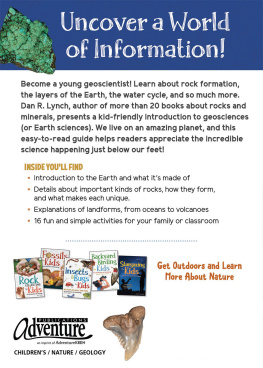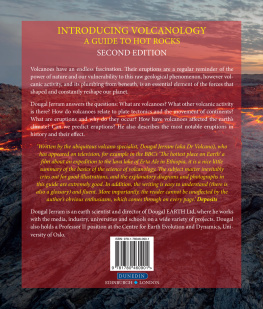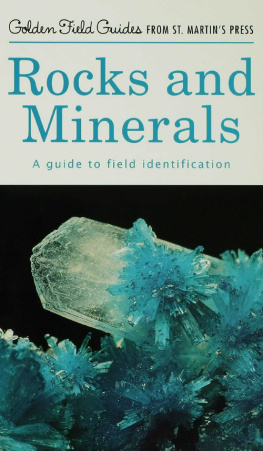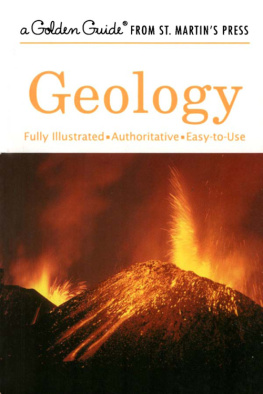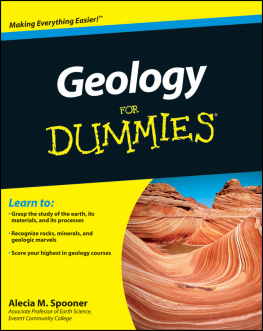GEOLOGY AND OURSELVES
Geology is the study of the earth. As a science, it is a newcomer in comparison with, say, astronomy. Whereas geology is only about 200 years old, astronomy was actively studied by the Egyptians as long as 4,000 years ago. Yet speculation about the earth and its activities must be as old as the human race. Surely, primitive people were familiar with such natural disasters as earthquakes and volcanic eruptions.
Gradually, human society became more dependent upon the earth in increasingly complex ways. Today, behind the insulation of our modern living conditions, civilization remains basically dependent upon our knowledge of the earth. All our minerals come from the earths crust. Water supply, agriculture, and land use also depend upon sound geologic information.
Geology stimulates the mind. It makes use of almost all other sciences and gives much to them in return. It is the basis of modern society.

Volcanic eruption in Kapoho, Hawaii. Many islands in the Pacific are volcanic in origin.
THE BRANCH OF GEOLOGY emphasized here is physical geology. Other Golden Guides of this series, Rocks and Minerals and Fossils, deal with the branches of mineralogy, petrology, and paleontology.
PHYSICAL GEOLOGY is the overall study of the earth, embracing most other branches of geology but stressing the dynamic and structural aspects. It includes a study of landscape development, the earths interior, the nature of mountains, and the composition of rocks and minerals.

HISTORICAL GEOLOGY is the study of the history of earth and its inhabitants. It traces ancient geographies and the evolution of life.

ECONOMIC GEOLOGY is geology applied to the search for and exploitation of mineral resources such as metallic ores, fuels, and water.

STRUCTURAL GEOLOGY (tectonics) is the study of earth structures and their relationship to the forces that produce the structures.

GEOPHYSICS is the study of the earths physical properties. It includes the study of earthquakes (seismology) and methods of mineral and oil exploration.

PHYSICAL OCEANOGRAPHY is closely related to geology and is concerned with the seas, major ocean basins, seafloors, and the crust beneath them.

THE SIZE AND SHAPE OF THE EARTH were not always calculated accurately. Most ancient peoples thought the earth was flat, but there are many simple proofs that the earth is a sphere. For instance, as a ship approaches from over the horizon, masts or funnels are visible. As the ship comes closer, more of its lower parts come into view. Final proof, of course, was provided by circumnavigating the globe and by photographs taken from spacecraft.
The Greek geographer and astronomer Eratosthenes was probably the first (about 225 B.C.) to measure successfully the circumference of the earth. The basis for his calculations was the measurement of the elevation of the sun from two different points on the globe. Two simultaneous observations were made, one from Alexandria, Egypt (Point B, seen ), and the other from a site on the Nile near the present Aswan Dam (Point A). At the latter point, a good vertical sighting could be made, as the sun was known to shine directly down a well at noon on the longest day (June 23) of the year.
Eratosthenes reasoned that if the earth were round, the noonday sun could not appear in the same position in the sky as seen by two widely separated observers. He compared the angular displacement of the sun (Y) with the distance between the two ground sites, A and B.

RECENT DATA from orbiting earth satellites have confirmed that the earth is actually slightly flattened at the poles. It is an oblate spheroid, the polar circumference being 27 miles less than at the equator. The following measurements are currently accepted:
| Avg. diameter | 7,918 mi. |
| Avg. radius | 3,959 mi. |
| Avg. circumference | 24,900 mi. |
LARGE AS THE EARTH IS, it is minute in comparison with the universe, where distances are measured in light yearsthe distance light, moving at 180,000 miles per second, travels in a year. This is about 6 billion miles or 10 million, million kilometers. Using these units of measurements, the moon is 1.25 light seconds from the earth, the sun is 8 light minutes from the earth, and the nearest star is 4 light years from the earth. Our galaxy is 80,000 light years in diameter. The most distant galaxies are 8 billion light years from earth. It is estimated that there are at least 400 million galaxies visible from earth using radio telescopes and similar means of detection. Galaxies are either elliptical or spiral in shape.
ERATOSTHENES measured the distance (X) between Points A and B as 5,000 stadia (about 575 miles). Although the observer at Point A saw the sun directly overhead at noon, the observer at B found the sun was inclined at an angle of 7 12 (Y) to the vertical. Since a reading of 7 12 corresponds to one-fiftieth of a full circle (360), Eratosthenes reasoned that the measured ground distance of 5,000 stadia must represent one-fiftieth of the earths circumference. He calculated the entire circumference to be about 28,750 miles.

THE EARTHS SURFACE, for the purpose of measurements, is commonly assumed to be uniform, for mountains, valleys, and ocean deeps, great as some are, are relatively insignificant features in comparison with the diameter of the earth.
But mountains are not insignificant to humans. They play a major role in controlling the climate of the continents; they have profoundly influenced the patterns of human migration and settlement.
Mountain ranges, with very few exceptions, are narrow, arcuate belts, thousands of miles in length, generally developed on the margins of the ancient cores or shields of the continents. They consist of great thicknesses of sedimentary and volcanic rocks, many of them of marine origin. Their intense folding and faulting are evidence of enormous compressive forces.
Mountains are not limited to the land. The ocean floor has even more relief than the continents. Most of the continental margins extend as continental shelves to a depth of about 600 feet below the level of the sea, beyond

